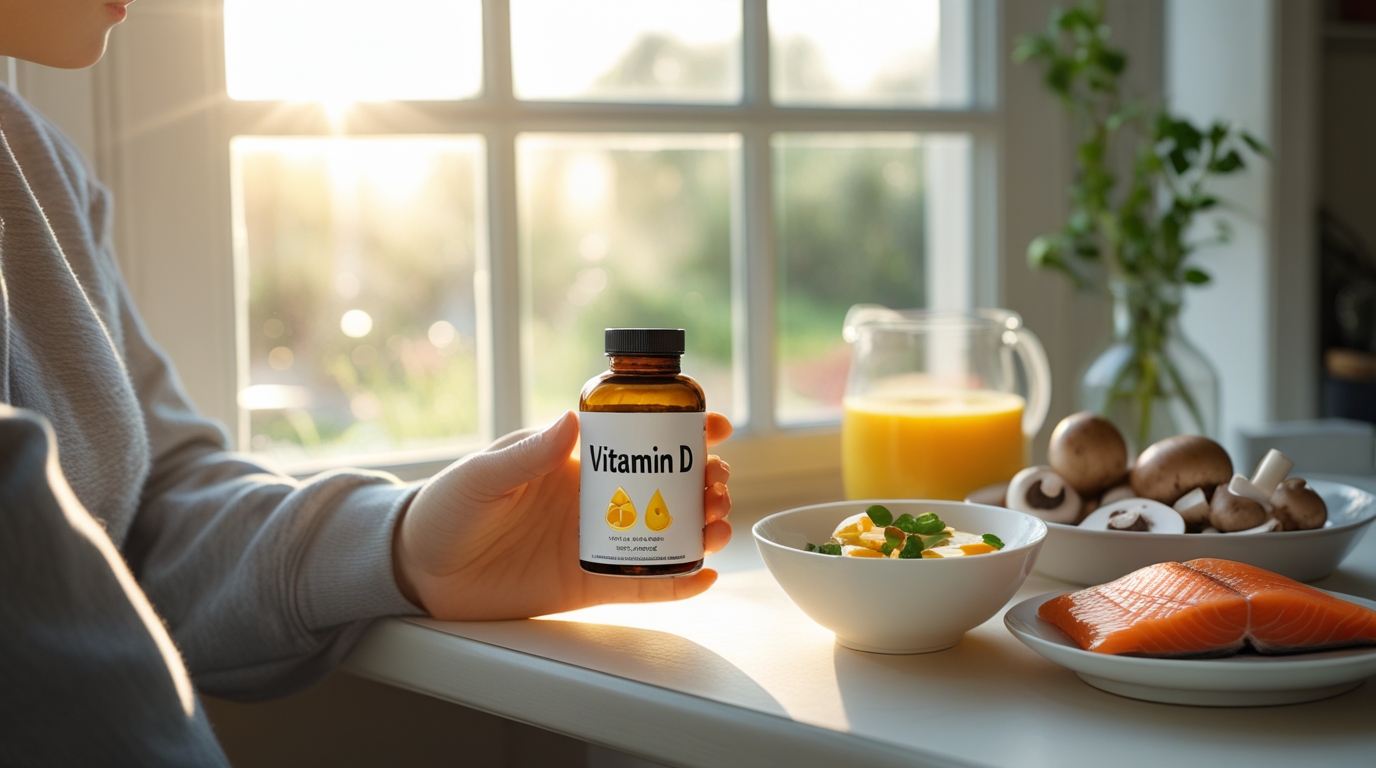This article, titled The Ultimate Guide to Vitamin D: Everything Americans Need to Know, explores the importance, sources, recommended dosage, and potential risks of Vitamin D specifically for a U.S. audience.
Although many Americans don’t get enough of this vital nutrient, Vitamin D is crucial for maintaining overall health. Often referred to as the “sunshine vitamin,” it strengthens bones, boosts mood, supports the immune system, and even impacts heart health. This comprehensive guide, written especially for American readers, covers everything you need to know about Vitamin D—from its benefits and recommended dosages to the best sources and supplements.
What Is Vitamin D and Why Is It Important?
Vitamin D is a fat-soluble vitamin that helps the body absorb calcium and phosphorus, two essential minerals for healthy bones and teeth. It also supports muscle function, regulates inflammation, and strengthens the immune system.
There are two main forms:
- Vitamin D2 (ergocalciferol) – found in some plants and fortified foods
- Vitamin D3 (cholecalciferol) – produced in the skin through sun exposure and found in animal-based foods
Read more: Vitamin D vs D3 in the United States
Signs of Low Vitamin D in the U.S.
Unbeknownst to them, millions of Americans lack enough vitamin D. Typical indicators include:
- Fatigue and tiredness
- Muscle weakness
- Bone pain or back pain
- Depression or mood swings
- Frequent infections or illnesses
Related: Signs of Low Vitamin D
How Much Vitamin D Should You Take Daily?
According to the National Institutes of Health (NIH):
- Infants (0–12 months): 400 IU
- Children (1–18 years): 600 IU
- Adults (19–70 years): 600 IU
- Adults over 70 years: 800 IU
- Pregnant or breastfeeding women: 600 IU
Note: These are general guidelines. Your doctor may recommend different dosages based on individual health needs.
👉 Full article: How Much Vitamin D Should You Take Daily in the United States
Top Sources of Vitamin D for Americans
See also: Top 10 Vitamin D-Rich Foods in the U.S.
1. Sunlight
Depending on your region and skin tone, just 10 to 15 minutes of sun exposure a few times a week can help develop enough quantities of vitamin D.
2. Foods Rich in Vitamin D
- Wild-caught salmon
- Fortified milk and cereals
- Mushrooms (UV-exposed)
See full list: Top 10 Vitamin D-Rich Foods in the U.S.
3. Supplements
Supplements are frequently required, especially in northern states, during the winter months, or for individuals who get little sunlight exposure.
Our Picks: Best Vitamin D Supplements in the Uni
Who Is Most at Risk of Vitamin D Deficiency in the United States?
- Older adults
- People with darker skin tones
- Those who live in northern states
- People who wear full-body coverings for religious/cultural reasons
- Individuals with chronic diseases affecting fat absorption (e.g., Crohn’s disease)
Learn more: Vitamin D Deficiency in the United States
How Vitamin D Affects Different Age Groups
Vitamin D requirements and effects vary across different age groups:
- Children & Teens: Needed for strong bones during growth and to prevent rickets.
- Adults (19–50): Supports immune health and bone density.
- Older Adults (50+): Prevents bone loss and may reduce the risk of fractures.
- Pregnant/Breastfeeding Women: Supports fetal bone development and reduces pregnancy complications.
Ensuring age-appropriate intake is essential for lifelong wellness.
Vitamin D and Seasonal Affective Disorder (SAD)
A form of depression known as seasonal affective disorder (SAD) is most prevalent in the fall and winter. The body may produce less vitamin D as a result of limited sun exposure during these seasons, which could hasten the onset of SAD. Numerous studies indicate a link between low vitamin D levels and symptoms of mood swings, exhaustion, and melancholy, while further research is required.
Particularly for those who live in northern regions, increasing vitamin D levels through supplementation, a balanced diet, or sun exposure may help lower the likelihood or intensity of SAD symptoms.
Vitamin D Myths and Facts Americans Still Believe
For additional reading, visit this well-researched article from the Mayo Clinic: Vitamin D: Why you need it.
Despite growing awareness, several myths about Vitamin D still persist. Let’s clear up a few:
- Myth: If you get some sun daily, you don’t need supplements.
- Fact: Depending on where you live and your skin tone, sunlight alone may not provide enough Vitamin D, especially in winter or cloudy regions
- Myth: Vitamin D is only for bone health.
- Fact: It also supports immune function, mood regulation, and may play a role in heart and brain health.
- Myth: All Vitamin D supplements are the same.
- Fact: Vitamin D3 is more effective than D2 for maintaining healthy levels. Always check for reputable brands and dosage.
Knowing the facts enables you to make better choices for your well-being.
FAQs: Everything Americans Ask About Vitamin D
Q1: Can I get enough Vitamin D through food alone?
Not all the time. While food can help, many people still need supplements, especially in the winter.
Q2: Is too much Vitamin D harmful?
In agreement. Toxic effects may result from high dosages. Unless your doctor instructs you otherwise, follow the suggested dosages.
Q3: How do I know if I’m deficient?
Your doctor can check your vitamin D levels with a straightforward blood test.
Q4: Are Vitamin D2 and D3 the same?
No, vitamin D levels can be raised and maintained more effectively with D3.
Q5: Can I take Vitamin D with other vitamins or medications?
Add a short answer explaining interactions with calcium, magnesium, or medications.
Conclusion: Prioritize Your Sunshine Vitamin
Vitamin D is more than just a trend—it’s a necessity. Whether you get it from food, supplements, or sunlight, maintaining adequate levels is essential for your overall health. Take charge by getting tested, choosing nutrient-rich foods, and using high-quality supplements when necessary.
This conclusion reinforces our Vitamin D Guide for Americans—a valuable resource to help readers make informed health choices, a comprehensive and reliable Vitamin D guide for Americans that offers clear insights and actionable tips. Make sure to revisit and share this guide as your go-to reference.
Call to Action
Start today! Add a Vitamin D-rich food to your next meal or pick a trusted supplement from Amazon. Share this guide with someone who needs to know!
Disclaimer
This article is for educational purposes only and is not a substitute for professional medical advice. Always consult a healthcare provider before starting any supplement regimen.
Written by the team at FitFusionBlogs — your trusted guide to American health and wellness.



